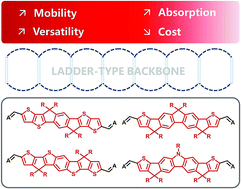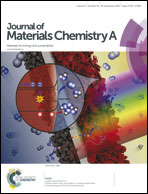Recent advances in electron acceptors with ladder-type backbone for organic solar cells
Abstract
Ladder-type non-fullerene acceptors have developed very rapidly since 2015 as they have tunable structure, a broad absorption region and good morphology control. The power conversion efficiency (PCE) of non-fullerene organic solar cells (NF-OSC) increased from below 6% to over 13% and, in this review, we analyze the fundamental concepts of organic bulk heterojunction (BHJ) solar cells and different building blocks of non-fullerene acceptors to have an overview of high-performance photovoltaic materials. Meanwhile, we also discuss several design guidelines for chemical construction and modification, which primarily focus on backbone variations, side-chain engineering, and end-cap group substitution. The PCE of several backbones, such as IDT, IDTT, BDCPDT, etc. have successfully exceeded 10% PCE, which demonstrates great potential for future optimization. Side-chains can affect intermolecular packing by forming a 3-D conformation along with the rigid backbones. End-cap groups can regulate electronic properties of the acceptors directly and provide the main electron-transport channels which influence frontier orbital properties. Although design principles and mechanistic understanding of ladder-type acceptors have been explored, there are also many opportunities and challenges of device mechanisms and molecular optimization which need to have deep study and investigation. We hope this review will assist readers to better understand the design principles of high-performance photovoltaic materials, molecular design, and structure–property relationships.

- This article is part of the themed collection: Recent Review Articles


 Please wait while we load your content...
Please wait while we load your content...